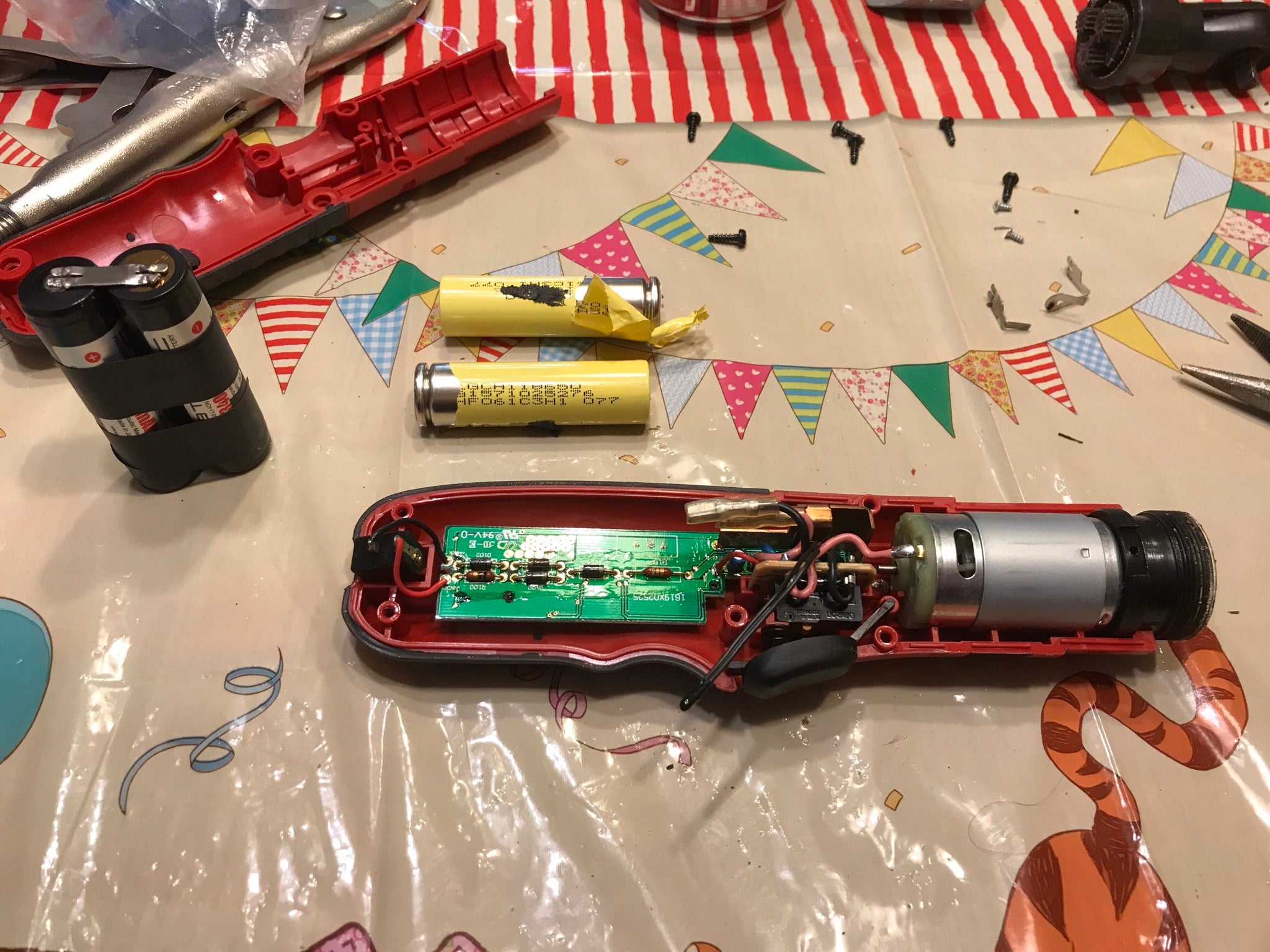 "f86sabre" (f86sabre)
"f86sabre" (f86sabre)
01/20/2019 at 14:29 ē Filed to: Tools
 1
1
 7
7
 "f86sabre" (f86sabre)
"f86sabre" (f86sabre)
01/20/2019 at 14:29 ē Filed to: Tools |  1 1
|  7 7 |

Replacing the batteries and hoping I donít explode.
 VincentMalamute-Kim
> f86sabre
VincentMalamute-Kim
> f86sabre
01/20/2019 at 14:56 |
|
Are you spot welding the tabs onto the new batteries?
 f86sabre
> VincentMalamute-Kim
f86sabre
> VincentMalamute-Kim
01/20/2019 at 15:04 |
|
I donít have that capability. Do you think soldering would work?
Edit: did some reading and no, not without special tools.†
 BvdV - The Dutch Engineer
> f86sabre
BvdV - The Dutch Engineer
> f86sabre
01/20/2019 at 15:04 |
|
Generally speaking an 18650 cell should last at least a 1000 charge/discharge cycles, so they probably broke due to lack of battery management in the tool... (which bothers the battery engineer in me)
 f86sabre
> BvdV - The Dutch Engineer
f86sabre
> BvdV - The Dutch Engineer
01/20/2019 at 15:09 |
|
That is what I was seeing online. †If you leave them in the charger they die. †Iíve only used the thing a few times.
 VincentMalamute-Kim
> f86sabre
VincentMalamute-Kim
> f86sabre
01/20/2019 at 15:17 |
|
Iíve soldered the tabs with a high watt soldering iron, sanding, and flux. Obviously donít leave the soldering iron on the battery for very long. Face shield probably isnít a bad idea.
Edit: to respond to your edit. I didnít know soldering wasnít possible. Good thing I didnít read up on it before soldering
!
Or try this for just a few parts:
 BvdV - The Dutch Engineer
> f86sabre
BvdV - The Dutch Engineer
> f86sabre
01/20/2019 at 15:20 |
|
Yeah that sounds like a bad implementation. Have you measured the voltage of the old cells with a multimeter? Because if it happened by leaving it on the charger too long, the cells might have arrived at a voltage level above the operating range of the tool. It might be the case that the tool does have a rudimentary management on the drive side, which cuts off the cell when it gets above a certain threshold (and when it gets below a lower threshold) .
In a good implementation, the charger would be stopped once the cells are full (~ 4.2V each ), preventing cell damage.
 f86sabre
> VincentMalamute-Kim
f86sabre
> VincentMalamute-Kim
01/20/2019 at 15:22 |
|
Well, it said it could be done, but you have to be super careful.†